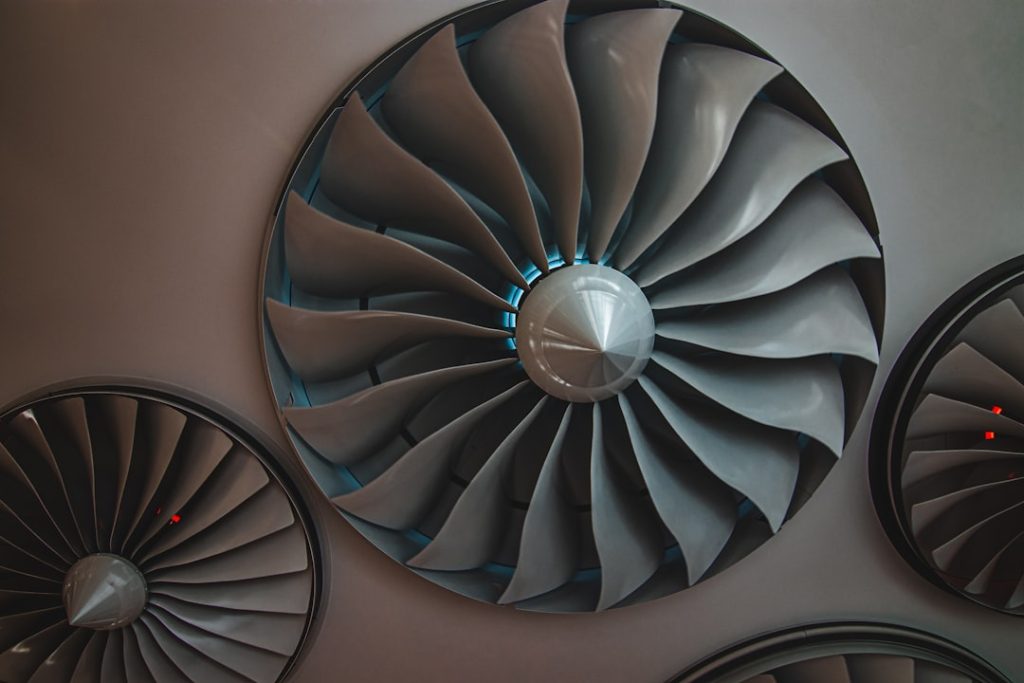The aerospace industry is a multifaceted sector that encompasses the design, development, and production of aircraft, spacecraft, and related systems and equipment. This industry plays a pivotal role in global transportation, defense, and exploration, contributing significantly to economic growth and technological advancement. The aerospace sector is not only about commercial aviation; it also includes military aviation, space exploration, and satellite technology.
The industry’s complexity is underscored by its reliance on a wide array of engineering disciplines, including aerodynamics, materials science, avionics, and propulsion systems. Historically, the aerospace industry has been characterized by rapid innovation and evolution. From the Wright brothers’ first powered flight in 1903 to the advent of supersonic jets and reusable rockets, the journey has been marked by milestones that have transformed how humanity interacts with the skies and beyond.
The industry has also been a catalyst for technological advancements that extend beyond aviation and space exploration, influencing sectors such as telecommunications, weather forecasting, and even healthcare through the development of advanced materials and systems.
Key Takeaways
- The aerospace industry encompasses the design, development, and production of aircraft, spacecraft, and related systems and equipment.
- Key players in the aerospace industry include Boeing, Airbus, Lockheed Martin, and Northrop Grumman, among others.
- Innovations in aerospace technology include advancements in materials, propulsion systems, and autonomous flight capabilities.
- Sustainable practices in the aerospace industry focus on reducing emissions, improving fuel efficiency, and minimizing environmental impact.
- Future trends in aerospace innovation include the development of supersonic and hypersonic aircraft, space tourism, and the use of artificial intelligence in aerospace systems.
Key Players in the Aerospace Industry
The aerospace industry is dominated by several key players that have established themselves as leaders through innovation, strategic partnerships, and extensive research and development. Major corporations such as Boeing, Airbus, Lockheed Martin, and Northrop Grumman are at the forefront of commercial and military aviation. Boeing and Airbus are particularly notable for their rivalry in the commercial aircraft market, where they compete to produce the most efficient and technologically advanced airliners.
Their flagship models, such as the Boeing 787 Dreamliner and Airbus A350, showcase cutting-edge technology aimed at improving fuel efficiency and passenger comfort. In addition to these giants, there are numerous smaller companies and startups that contribute to niche areas within the aerospace sector. Companies like SpaceX have revolutionized space travel with their reusable rocket technology, significantly reducing the cost of launching payloads into orbit.
Similarly, firms like Blue Origin are pushing the boundaries of suborbital flight and space tourism. These emerging players are not only challenging established norms but also driving innovation through agile practices and a willingness to experiment with new technologies.
Innovations in Aerospace Technology

Innovation is the lifeblood of the aerospace industry, with advancements occurring at a rapid pace across various domains. One of the most significant areas of innovation is in propulsion systems. The development of more efficient engines, such as geared turbofans and hybrid-electric propulsion systems, has led to substantial reductions in fuel consumption and emissions.
For instance, Pratt & Whitney’s geared turbofan engine has been lauded for its ability to deliver up to 16% better fuel efficiency compared to traditional engines, making it a game-changer for airlines looking to reduce operational costs. Another area of innovation is in materials science. The use of composite materials has become increasingly prevalent in aircraft design due to their lightweight properties and resistance to corrosion.
The Boeing 787 Dreamliner is a prime example of this trend; approximately 50% of its airframe is made from composite materials, which contributes to its overall efficiency and performance. Additionally, advancements in additive manufacturing (3D printing) are enabling manufacturers to produce complex components with reduced waste and shorter lead times. This technology allows for rapid prototyping and customization of parts, which can be particularly beneficial in the aerospace sector where precision is paramount.
Sustainable Practices in the Aerospace Industry
| Metrics | Data |
|---|---|
| Carbon Emissions Reduction | 20% reduction in carbon emissions by 2030 |
| Renewable Energy Usage | Increasing renewable energy usage to 50% by 2025 |
| Waste Reduction | Implementing waste reduction strategies to achieve 30% reduction by 2023 |
| Water Conservation | Implementing water conservation measures to reduce water usage by 25% by 2024 |
As environmental concerns continue to rise globally, the aerospace industry is increasingly focusing on sustainable practices to mitigate its impact on climate change. One of the primary strategies involves improving fuel efficiency through technological advancements. Airlines are investing in newer aircraft that consume less fuel per passenger mile, thereby reducing greenhouse gas emissions.
The International Air Transport Association (IATA) has set ambitious targets for the aviation sector, aiming for a 50% reduction in net emissions by 2050 compared to 2005 levels. In addition to fuel efficiency improvements, there is a growing emphasis on alternative fuels. Sustainable aviation fuels (SAFs), derived from renewable resources such as plant materials or waste products, are being developed to replace traditional jet fuels.
These fuels can significantly lower lifecycle carbon emissions when compared to conventional fossil fuels. Major airlines are beginning to incorporate SAFs into their operations; for example, United Airlines has committed to purchasing millions of gallons of SAF over the coming years as part of its sustainability strategy.
Future Trends in Aerospace Innovation
Looking ahead, several trends are poised to shape the future of aerospace innovation. One prominent trend is the increasing integration of artificial intelligence (AI) and machine learning into various aspects of aerospace operations. From predictive maintenance that anticipates equipment failures before they occur to optimizing flight paths for fuel efficiency, AI has the potential to revolutionize how airlines operate.
For instance, Delta Air Lines has begun using AI algorithms to analyze vast amounts of data from its fleet to improve operational efficiency and enhance customer experience. Another significant trend is the push towards urban air mobility (UAM). As cities become more congested, there is a growing interest in developing electric vertical takeoff and landing (eVTOL) aircraft that can provide on-demand air transportation within urban environments.
Companies like Joby Aviation and Volocopter are at the forefront of this movement, working on designs that could transform urban transportation by reducing travel times and alleviating ground traffic congestion. The successful implementation of UAM could lead to a paradigm shift in how people navigate cities.
Collaborations and Partnerships in the Aerospace Industry

Collaboration is essential in the aerospace industry due to its complexity and the high costs associated with research and development. Major players often form strategic partnerships to share resources, knowledge, and technology. For example, Boeing has collaborated with NASA on various projects aimed at advancing space exploration technologies.
These partnerships leverage each organization’s strengths—Boeing’s engineering expertise combined with NASA’s research capabilities—to achieve common goals. Moreover, collaborations extend beyond traditional aerospace companies to include tech firms and startups. The integration of digital technologies into aerospace operations has led to partnerships with companies specializing in software development and data analytics.
For instance, Airbus has partnered with Palantir Technologies to enhance its data analytics capabilities for improving manufacturing processes and supply chain management. Such collaborations not only foster innovation but also help companies stay competitive in an ever-evolving market.
Challenges and Opportunities for Aerospace Companies
Despite its many advancements, the aerospace industry faces several challenges that could impact its growth trajectory. One significant challenge is the ongoing supply chain disruptions exacerbated by global events such as the COVID-19 pandemic. The aerospace supply chain is intricate and relies on a network of suppliers across various regions; any disruption can lead to delays in production schedules and increased costs.
Companies must develop more resilient supply chains that can withstand unforeseen events while maintaining quality standards. On the other hand, these challenges also present opportunities for innovation and growth. The need for more resilient supply chains has prompted companies to invest in digital technologies such as blockchain for better traceability and transparency throughout their operations.
Additionally, as governments worldwide push for greener technologies, there is an opportunity for aerospace companies to lead in developing sustainable solutions that align with regulatory requirements while appealing to environmentally conscious consumers.
The Future of Aerospace Innovation
The future of aerospace innovation is bright yet complex, characterized by rapid technological advancements and evolving market dynamics. As companies navigate challenges such as supply chain disruptions and environmental concerns, they also have unprecedented opportunities to innovate and redefine what is possible in aviation and space exploration. The integration of AI, sustainable practices, and urban air mobility concepts will likely shape the next generation of aerospace technologies.
As we look forward to what lies ahead in this dynamic industry, it is clear that collaboration will be key in overcoming challenges and harnessing opportunities for growth. By working together across sectors—be it traditional aerospace firms partnering with tech startups or governments collaborating with private enterprises—the industry can continue to push boundaries while ensuring a sustainable future for air travel and space exploration.


